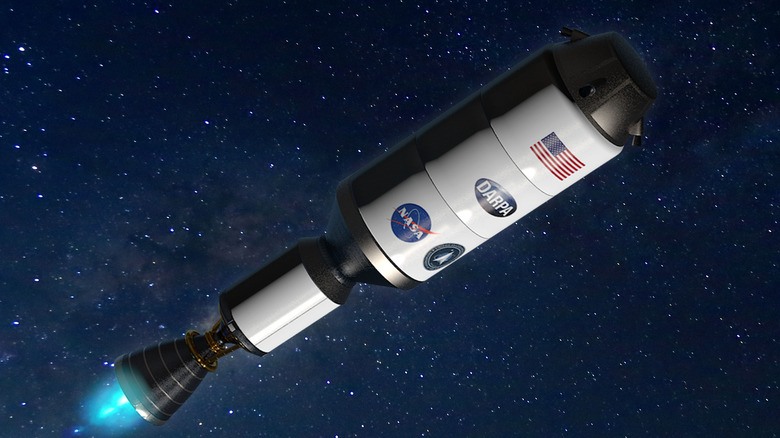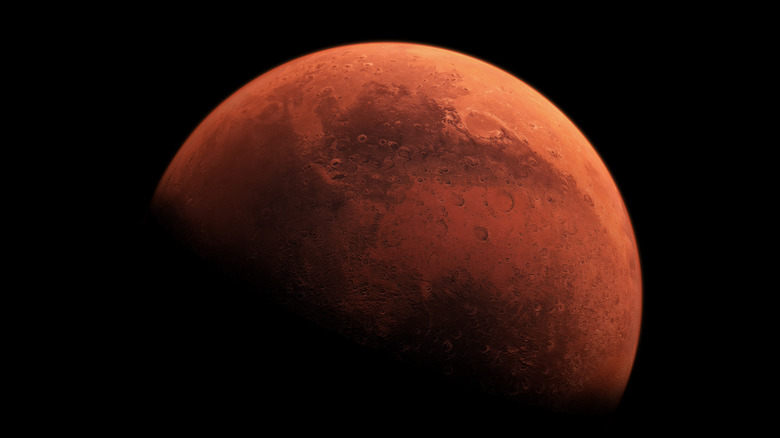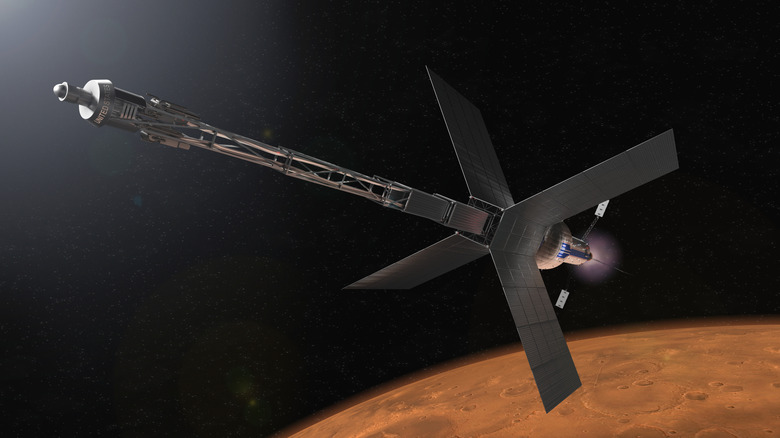Everything We Know About NASA's DRACO Nuclear-Powered Rocket
Previous NASA rockets have used a variety of chemical fuels to get off the ground and move in space. The new Demonstration Rocket for Agile Cislunar Operations (DRACO) project seeks to use nuclear fission technology to transverse the stars and eventually reach Mars. According to a NASA press release, the agency has chosen aerospace defense contractor Lockheed Martin as the primary contractor. NASA and DARPA (Defense Advanced Research Projects Agency) are handing the design, building, and testing duties for the new craft to Lockheed Martin, while BWX Technologies out of Virginia will handle the nuclear fission reactor.
While designing a feasible nuclear-powered aircraft is a huge step in the future of space travel, getting humans to set foot on Mars is the real goal of the DRACO project. NASA's Deputy Administrator Pam Melroy says: "Working with DARPA and companies across the commercial space industry will enable us to accelerate the technology development we need to send humans to Mars. This demonstration will be a crucial step in meeting our Moon to Mars objectives for crew transportation into deep space."
A shorter and safer journey to Mars
Nuclear-powered rocket tests will begin as early as 2027. According to NASA, a nuclear-powered spacecraft will actually be much safer for crews, as counterintuitive as that sounds. It will (hopefully) reduce the time it takes for pilots to get to Mars, therefore reducing the overall risks to crew members during the flight. Still, the mission will take about two years for a round trip to the Red Planet, if NASA meets its goals.
The Saturn V rocket that carried astronauts to the moon in the 1960s used several hundred thousand gallons of both kerosene and liquid oxygen as fuel to get the rockets off the ground. NASA states that the DRACO project will use what's called nuclear thermal propulsion technology instead. The heat from the nuclear reaction will ignite the liquid fuel that will then propel the spacecraft. Reportedly, it will be up to three times as fuel efficient than prior launch vehicles.
Harnessing nuclear power
As for the actual rocketry components and the go-fast(er) parts, there are two types of nuclear propulsion that are in NASA's sights. There's the aforementioned nuclear thermal propulsion which, while still using liquid fuel, is theoretically much faster than the Saturn V and SpaceX rockets of yore. Using the heat generated by nuclear fission, the fuel is converted into a gas and forced out of a nozzle which provides the high amount of thrust needed for the spacecraft to break through the atmosphere into space.
Once the craft is actually in space, it needs less thrust and more of a long-haul solution. That's where nuclear electric propulsion comes in. Using the same fission technology, the reactor could theoretically use the electricity it generates to push gas out of thrusters on the craft, allowing it to maneuver in space. Nuclear reactors already power the United States Navy's submarines and aircraft carriers, and that technology allows vessels to keep running for years at a time. When a mission to Mars is expected to take years to complete, nuclear power seems like a no-brainer.


